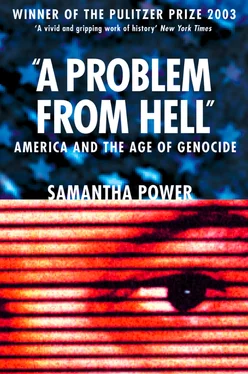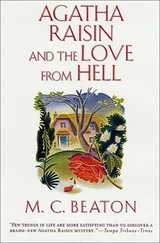U.S. policymakers also cited the possibly perverse results of taking a more outspoken approach. Public rebukes would likely anger the Khmer Rouge, causing them to intensify their violence against innocents or withdraw even further into darkness. Diplomats fell into the trap of believing (because they hoped) that the KR were on the verge of emerging from their isolation. 102It is of course possible that outside expressions of interest in the KR’s treatment of its citizens would have made the regime more barbarous and xenophobic, but it is hard to imagine how much worse the regime could have become. Often choosing a policy of isolation can deprive a concerned state of its only means of influencing a violent regime. But in this case the United States had nothing to risk losing by speaking the truth. A far steadier stream of condemnations could conceivably have convinced those educated KR officials who maintained covert radio links to the outside world to press for a more humane policy or even to revolt against Pol Pot and his clan.
The United States might also have pressured China, the KR’s main backer, to use its considerable leverage to deter the KR from its murderousness. But the Carter administration was determined not to jeopardize its burgeoning relationships with either of the KR’s regional allies: Thailand and China. Thailand was anti-Communist, but it maintained civil relations with the Khmer Rouge because its top priority was containing Vietnam. And China, which viewed the Khmer Rouge as a natural and ideological ally, had occupied center-stage in U.S. foreign policy circles since Nixon’s 1972 trip to Beijing. The Chinese had long been supplying the KR with military advisers, light arms, and ammunition. In early 1978 Chinese military aid to the Khmer Rouge reportedly increased to include 100 light tanks, 200 antitank missiles, a number of long-range 122- and 130-millimeter guns, and more than a dozen fighter aircraft. Despite the gruesome reports of KR terror, the United States did not protest the transaction. 103In May 1977 President Carter called the U.S.-Chinese relationship “a central element of our global policy” and China a “key for global peace.” 104Although China was the state most likely able to affect KR behavior, the Carter administration was not about to risk normalization by carping about the KR’s human rights abuses.
Analogy and Advocacy
U.S. policy toward Cambodia was not contested within the executive branch. Nothing could be done, State Department and White House officials assumed, and virtually nothing was done. It took a handful of members of Congress to begin demanding that the United States take a more expansive view of the land of the possible. Stephen Solarz was a Democratic House member from New York who had won election in 1974 on an antiwar platform and had earlier helped block further U.S. funding to the Lon Nol regime. Unlike most of his colleagues, Solarz had not lost interest in the region with the cutoff of U.S. funds. In August 1975 he had traveled with a House delegation to Thailand, where he had taken a helicopter ride with the embassy’s Twining to Aranyaprathet. There, the man who would become known as the “Marco Polo” of Congress for all his foreign travel, heard tales that reminded him of the forced deportation of Jews in World War II. As a Jew and as a politician—his district contained more Holocaust survivors than any other in the country—he became incensed. “They were killing anyone who wore glasses,” Solarz remembers, “because if they wore glasses, it suggested they knew how to read, and if they knew how to read, it suggested they had been infected with the bourgeois virus. It was a Great Leap Forward that made the Great Leap Forward under Mao look like a tentative half-step.”
In 1976, despite reports of nearly a million dead, no congressional hearings had been held specifically on human rights abuses in Cambodia. Solarz and a few other avid legislators had settled for including the grim press articles in the Congressional Record and occasionally condemning the KR in floor debates. Senator Claiborne Pell, who partnered with Proxmire in pushing the genocide convention and who would later do more than any other senator to try to punish Saddam Hussein for gassing Iraqi Kurds, took a parallel interest in Cambodia. On the floor of the Senate in 1976, he declared:
[If estimates of 1 million killed are] true, approximately one-fifth of the Cambodian population has been annihilated—a record of barbarous butchery which is surpassed in recent history only by the Nazi atrocities against the Jews during World War II…I am amazed that so little has been done to investigate and condemn what is happening in Cambodia. The UN Human Rights Commission has so far ignored the situation in that country. 105
By 1977, Solarz, Pell, and others had finally generated enough interest to stage hearings on Capitol Hill devoted exclusively to Cambodian atrocities. In one of those hearings, much of Solarz’s frustration over the U.S. policy of silence and the ongoing squabbles over numbers of dead burst forth. Indochina specialist Gareth Porter testified, again denouncing the “wild exaggeration and wholesale falsehood” of allegations of KR terror. Porter insisted that it was a “myth” that “one-to-two million Cambodians [had] been the victims of a regime led by genocidal maniacs.” Solarz exploded. “It is beyond belief to me that anyone could seriously argue that this hasn’t been going on,” he exclaimed. 106For the next year and a half, Solarz attempted to get the House to pass a resolution calling on President Carter to turn his attention to curbing the killings.
Solarz was one of several Americans who, in drawing attention to the KR horrors, linked his advocacy to the Holocaust. Seated more than two decades later in a study lined with shelves filled with 123 books on the Holocaust and another fifty-two on Hitler and Nazi Germany, Solarz reflects, “The Holocaust is the key to the whole thing. It is the Rosetta stone. For me, the Holocaust was the central fact of the twentieth century and has had more of an influence on my view of the world and America’s role in it than anything else.”
By the mid- and late-1970s, Hitler’s destruction of the Jews was at last becoming the subject of scholarly and public focus. The term “Holocaust” had not entered into popular usage until the late 1960s, but in 1970 two books analyzed the U.S. indifference to the Holocaust for the first time: Arthur Morse’s While Six Million Died:A Chronicle of American Apathy and Henry Feingold’s Politics of Rescue: The Roosevelt Administration, 1939– 1945 . One of the most pivotal instruments for “popularizing” the Final Solution was the four-part, nine-and-a-half-hour television dramatization Holocaust, starring James Woods and Meryl Streep, which some 120 million viewers watched in 1978. The same year President Carter appointed a special commission on Holocaust remembrance and education and decided to build a monument to the horror on the National Mall in Washington,D.C.
By 1977, because it had become widely accepted that a bloodbath was indeed taking place in Cambodia, advocates of U.S. engagement tried to jar decisionmakers and ordinary citizens by likening Pol Pot’s atrocities to those of Hitler. Syndicated columnists Jack Anderson and Les Whitten published a total of fifteen opinion pieces on Cambodia, most of which invoked the Holocaust. 107On July 21, 1977, they wrote, “The uproar over human rights has ignored the world’s most brutal dictatorship. Adolf Hitler at his worst was not as oppressive as the Communist rulers of tiny Cambodia.” 108Several months later, Anderson and Whitten called the KR terror “the greatest atrocity since the Nazis herded Jews into the gas chambers.” 109When the Holocaust docudrama aired in 1978, Anderson noted that “another Holocaust story, every bit as stark as the recent TV saga” was ongoing. The Nazis had disguised their crimes with euphemisms such as “resettlement,”“removal,” and “special action,” Anderson wrote. So, too, the Khmer Rouge had introduced a sanitized language. “The Khmer word for ‘kill, assassinate, execute’ was never spoken when the annihilation policy was discussed,” he noted. “The Khmer term used was ‘baoh, caol,’literally ‘sweep, throw out’ or ‘sweep, discard.’” 110The next day Anderson penned another column, entitled “Cambodia: A Modern-Day Holocaust,” in which he condemned President Carter for averting his gaze from the extermination of Cambodians. 111
Читать дальше












